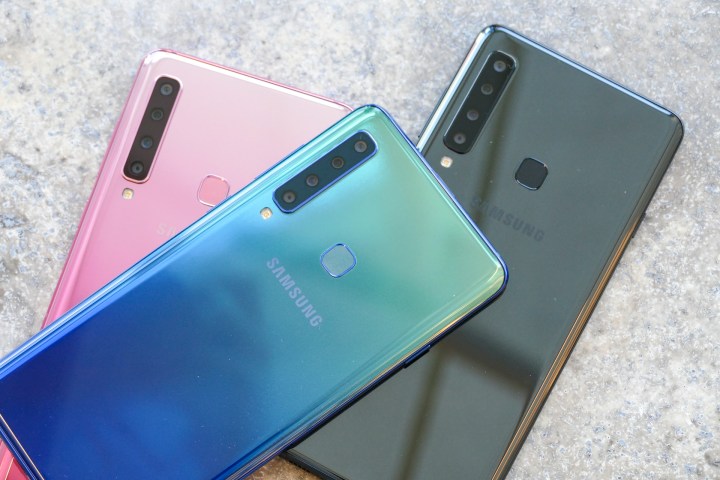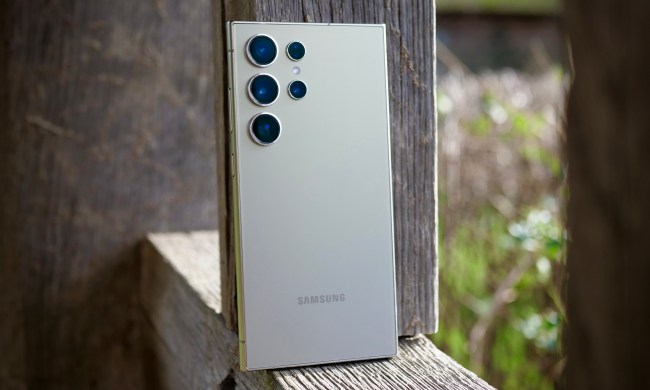
The Galaxy A9 2018 may be the first A series phone from Samsung you’ve paid attention to in a while, mainly due to the daring quad-lens camera on the back. However, don’t think that this is just a coincidence, as it’s all a part of Samsung’s plan to make its mid-range phones as desirable and feature-rich as the expensive Galaxy S and Note series phones.
Digital Trends sat down with Kate Beaumont, Samsung’s director of product, services and commercial strategy, who called the A series and J series phones the firm’s “best kept secrets,” to better understand why it’s keeping them secret no more, and what it means for Samsung’s future.
Flagship lite
Beaumont admits Samsung’s announcements usually focus on flagship phones, mainly because that’s where the interest lies, and where there’s a lot of innovation.

To illustrate the point, she talked about spending a day in a Samsung retail store interacting with people coming in to buy phones. They’d go straight for the S9 Plus or Note 9; but if the price was difficult to justify, they’d go down through the range from there.
But where would they go? That’s where the Galaxy A9 2018 comes in, along with a refreshed range of other A and J series phones.
“Price has become a key part of the buying process, more so than … in the past.”
“Why should people not have a “lite” flagship experience outside of the flagship range? We want to send the message that innovation doesn’t just come in our flagship series, and we’re trying to bring some of those features down through other devices.”
It’s a shift in strategy, Beaumont told us, with the number of A and J series phones available increasing from four to seven devices this year.
“It’s time we tell people we’ve got some other great devices,” she smiled.
Price, and value
Why the new push? “Price has become a key part of the buying process, more so than what we’ve seen in the past,” Beaumont pointed out, adding that Samsung’s seeing a switch to people looking for the best value in a new device, which is logical when phones — including Samsung’s own — regularly now reach or surpass $1,000.

Even if you end up buying a cheaper Samsung Galaxy phone, the company doesn’t want you to feel short-changed on features and services. Even the simpler J series phones have Samsung Pay, for example, and we’re hearing rumors about wireless charging coming to more Samsung devices, although this did not happen with the Galaxy A9 2018.
“There are certain features people look for, and a great camera is one of the main ones people want.”
In the U.K. where Galaxy A phones have a strong following, 20 percent of the market is mid-tier phones.
The A9 2018 is aimed at young people, who’re, “experience-driven,” which means people who share lots of photos on Instagram. It’s not by chance the camera has the features it does.
“The top three Instagram categories are beauty, travel, and nightlife,” Beaumont told us, and when you look at the camera features it has introduced, the A9’s setup fits these very well, from the bokeh shots, the wide-angle lens for landscapes, and the f/1.7 aperture for low-light photos.
Competition
There is another side to Samsung’s keen interest in making the A9, and its other cheaper phones, of greater interest: An increased level of competition, and the choice it gives us when wanting to buy a new phone. And it’s just the start, according to Beaumont.

“The competition is only going to increase,” she said. “It’s important to provide the right device at the right price.”
In the U.K., where the Galaxy A series phones have a strong following, 20 percent of the market is mid-tier phones, and the 2018 figures have increased by 46 percent over 2017, Beaumont revealed. Phones from Honor, OnePlus, Nokia, Sony, and others instantly spring to mind. Interestingly, Samsung doesn’t, and that’s the problem it’s looking to solve with the A9 2018.
The future
This brings us back to the introduction of the quad-lens rear camera, a world-first. Normally, we’d expect to see this type of new feature on an S series. Does this give us a hint at what’s to come from the Galaxy S10?
“We have the technology now, and as [the Galaxy A9 2018] is at the top end of the mid-range segment …”
“It’s a little early to talk about what’s coming up, and I think we’ve looked at a specific consumer segment here with the A9,” Beaumont said. “If some of the capabilities manifest on our flagship device, I think they may be a little bit different. How we bring about an optimized camera experience may or may not look the same on a flagship device next year.”
Naturally, Beaumont wasn’t about to give much away, but it’s clear Samsung isn’t saving its new tech for the S series, if it’s ready to go.
“Why would we wait?” she said when asked about the camera’s general suitability for an S series phone. “We have the technology now, and as [the Galaxy A9 2018] is at the top end of the mid-range segment, the feature makes it a great entry into the flagship world.”
To sum up, greater competition and more price-conscious buyers are making Samsung look more closely at the mid-range devices it releases, to offer better value and more premium services, and it won’t hold back on bringing new tech to them either. We’d call that very good news indeed.



